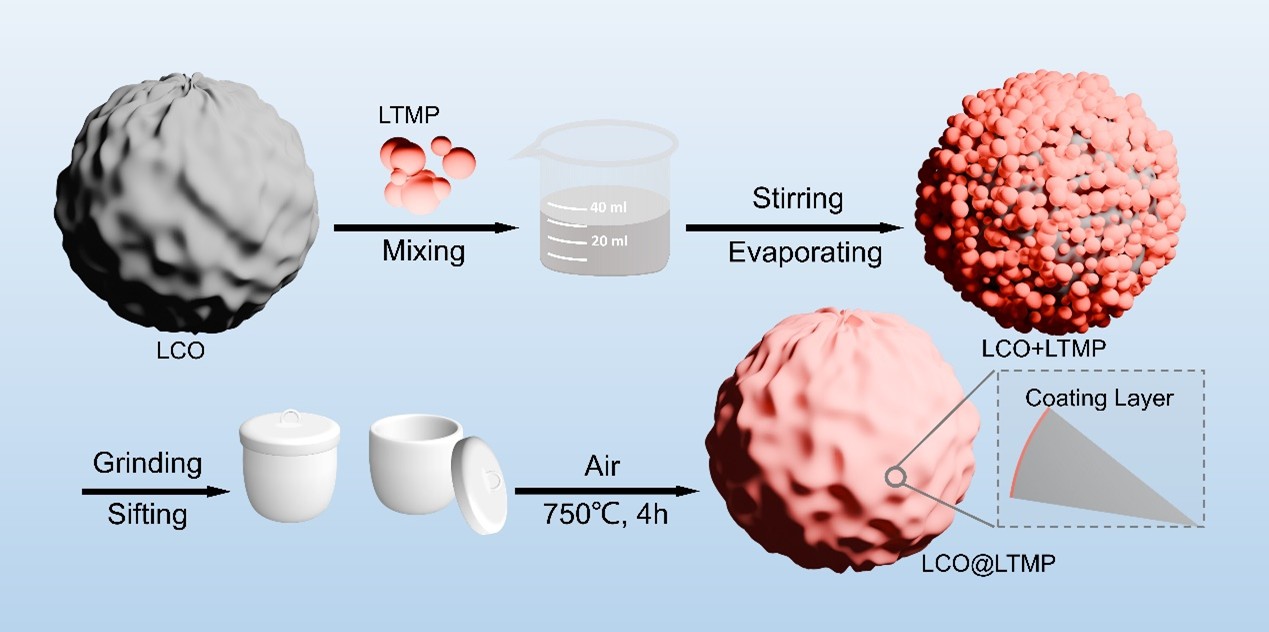Developing high-voltage LiCoO₂ (LCO) cathodes is crucial for overcoming current energy density limits in lithium-ion batteries. However, charging above 4.2 V triggers harmful phase transitions and interfacial degradation, leading to rapid capacity fade. Conventional strategies such as single-element doping or surface coating often fail to simultaneously address both bulk structural collapse and interfacial instability.
This study introduces an innovative Ti/Mg–PO₄ integrated modification strategy that enhances bulk and interfacial stability through three synergistic effects:
- Ti doping effectively suppresses H1–3 phase transitions above 4.55 V by strengthening interlayer bonding, preventing CoO₂ slab gliding, and avoiding lattice collapse;
- Mg doping stabilizes the crystal structure at ~4.2 V to maintain cycling stability;
- Phosphate groups form a robust interfacial shield through P=O covalent bonding with surface oxygen atoms
This tri-functional mechanism enables concurrent bulk stabilization and interface protection through a single thermal treatment process.
The LCO@LTMP composite was fabricated via a three-step process:
- Hydrothermal synthesis of the LTMP (LiTi₀.₅Mg₀.₅PO₄) precursor;
- Ethanol-assisted homogenization of LTMP with commercial LCO;
- High-temperature calcination at 750°C, inducing (i) LTMP-derived coating formation, (ii) Ti/Mg lattice doping, and (iii) in-situ generation of Li-ion conductive phases.
The modified LCO@LTMP demonstrates exceptional high-voltage stability, with significantly improved capacity retention after 250 cycles at 4.6 V compared to pristine LCO. Voltage-capacity profiles show stabilized voltage plateaus, confirming suppressed structural degradation
This work presents a simple and effective modification protocol for high-voltage LCO cathodes and offers valuable insights for designing stable layered oxide cathode materials.
- Interfacial Modification of High-Voltage LiCoO₂ Materials via Ti/Mg Doping Strategy for Inhibiting Harmful Phase Transition Effect
Peng Shi, Tao Zhou, Teng Wang, Xuan Du, Jingfeng Wang, Yinwei Liu, Guo Gao*,
Aggregate 2025
https://doi.org/10.1002/agt2.70105



